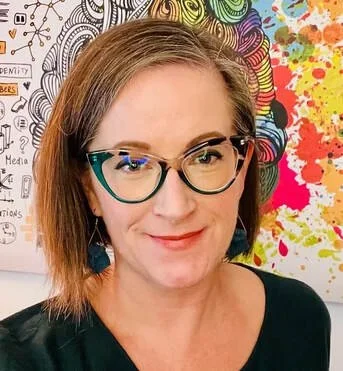Misophonia Freedom Project
This project is dedicated to finding misophonia success stories to learn more about what works and to identify common themes worth exploring so more people can find freedom! We hope the stories inspire you to persevere and help you see the bigger picture. All of us would love a "magic bullet" cure for misophonia, but so far the stories highlight how a collection of strategies/work/practices eventually make freedom possible.
The interviews are conducted by Sara Barrick, LMFT, Kresta Dalrymple, LMFT, and Sipora Wiessman, LCSW. You will see how each interviewee defines "freedom from misophonia" for themselves, but by and large we're interviewing those whose misophonia severity was a 7 or higher (out of 10) and now is a 2 or lower (and the change is not due no longer being exposed to one's triggers). If you fall in this category and are open to being interviewed (option for it to be anonymous), please email us at sara@demystifyingmisophonia.com, kresta@misophoniafreedomlab.com or contact@siporaweissman.com.
*See disclaimer at the bottom of this page.
Brooklyn
Free from misophonia since Feb. 2023, Brooklyn shares about her journey and what helped her find freedom.
Here is her story with no-triggers named and with triggers named.
Kim
Kim experienced misophonia while in the midst of multiple other health issues of both body and mind including dystonia and dysautonomia. After finding solutions to the later, she experienced relief from misophonia as well.
Here is her story with no-triggers named and with triggers named.
Moxie
Moxie has been free for 10 years. Watch this video interview with therapist Sipora Weissman, LCSW as she shares her journey to finding healing in many areas, not just Misophonia.
Note: Triggers are named in the interview.
Paige
Paige can remember feeling “extreme sensitivity” to her surroundings from the age of 4. This experience that she later could identify as Misophonia was triggered by common noises found in the classroom, made by ear/nose/throat, household pets, eating, and visuals of hands and feet. Paige notes that while “every once in a while” a particular person would be a trigger, she more often dissociated from her “fierce, strong emotions” towards people and would become obsessive about the sound or motion so “it” would just happen to be triggering.
Here is her story with no triggers named.
Kresta
Starting at age 12 my family's chewing noises drove me to tears from what -- at the time – seemed to be an illogical, hard to describe sensation of extreme discomfort that felt like torture until the sound stopped. It would be another 15 years before I heard someone describe my experiences on a radio interview. I can remember the relief in knowing I wasn't alone and that what I was experiencing had a name - Misophonia - or "Select Sound Sensitivity Syndrome". The relief was short lived however. As I found and connected with others having the same experience, we started to look for some thread of commonality that would explain what was wrong--and then fix it. Time and again, our hypothesis were proven wrong--some had trauma, others did not, co-occurring conditions such as Autism, other sensory sensitivities, eating disorders, physical abnormalities in the ear and brain...no common thread was ever found. All that was left was the cold comfort that others were suffering in the same way and that "coping strategies" were the only option.
Here is her story with triggers named and no triggers named.
Joey
Joey was interviewed by Sipora Weissman, LCSW to find out more about his healing journey from serious health issues and mental health struggles as well as Misophonia.
You can watch the interview here.
Please note, there was not the strongest internet connection, causing a slight delay in responses.
Sara
Sara struggled with misophonia for 25 years. Through an organic experience of memory reconsolidation—facilitated by the self-work she had done—she was able to end her body’s reactivity to everyday stimuli.
Here is her story with triggers named and no triggers named.
Emanuel
Emanuel had a number of triggers and rated the severity of his misophonia at a 10 out of 10 prior to doing Sequent Repatterning and Parts Work (IFS) with a trusted and skilled therapist in 2024. He now rates the severity of his misophonia at a 1.
Read his inspiring story with triggers named or with no triggers named.
Marco
Click here (and scroll down) to find commentary on a misophonia case study by Kresta Dalrymple from an Internal Family Systems perspective. Note: some triggers are named in the interview.
Tressi
While Tressi doesn't consider herself “free from misophonia”, she has experienced remarkable improvements, which she has maintained the past two years. Her story underscores the importance of exploring diverse therapeutic approaches and making lifestyle changes to improve one’s misophonia.
Here is her story with triggers named or with no triggers named.
Disclaimer: The Misophonia Freedom Project does not, and has never, claimed there is a "cure" for misophonia, nor does it endorse any specific modality, service, or provider. In fact, the lack of effective treatment and the complex nature of misophonia were key factors that propelled the project forward. While we, as a treatment community, have yet to identify a singular "treatment" for misophonia, we are seeing more and more examples of people finding relief—sometimes temporarily, sometimes long-term. These experiences have sparked our curiosity, prompting us to explore potential connections between them.
The interviews we conduct are aimed at gaining a fuller picture of what may have contributed to the relief, in an effort to identify common themes, refine our clinical approaches, and share a message of hope with those interested and affected by misophonia.
We are dedicated to the spirit of collaboration, in an effort to help more people with misophonia find relief. The integrity of the information we share about misophonia is of the utmost importance to us. If you have any questions or concerns regarding the project, we encourage you to reach out.









